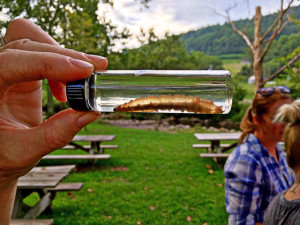The expression and the actual practice is “the canary in the coal mine,” a means to detect deadly levels of carbon dioxide gas that overwhelms the canary, signaling to the miners that they might succumb next, and so they are fairly warned to escape.
There are comparable early warning signs, using other small creatures, to detect whether the river and stream waters that we drink, fish and swim in may be “impaired,” or significantly degraded.
Unfortunately, we do have “impaired waters” – so this is not an academic question.
All our County’s streams are affected by human activities, especially development, and some do not meet the standards of the Clean Water Act and Virginia Water Quality Standards for recreational use and aquatic life.
We have to be concerned about Catoctin Creek and Goose Creek and their tributaries, Little River, Limestone Branch, Piney Run, Broad Run and Sugarland Run. We all have an obligation as stewards to use but not alter or compromise this most essential natural resource, the waters by which we live.
We have pollution from storm water runoff, grazing, failing septic tank systems. The more impervious surfaces we have, the more our watersheds are compromised. Nor can we ignore the fecal bacteria mostly due to livestock. We have to remediate against these polluting practices.
The good news is that there are things we can do to protect and preserve our waterways and we have the means to detect when our streams are “impaired.” Continue reading

